Service Information Regarding Engine Oil Leaks and/or Engine Coolant Leaks on V6 Engines

| Subject: | Service Information Regarding Engine Oil Leaks and/or Engine Coolant Leaks on V6 (L81) Engines. Due to change in oil cooler cover sealer, service procedure, and model years affected, this bulletin has been revised and supersedes bulletin 00-T-66, which should be discarded. |
| Models: | 2000-2001 Saturn L-Series vehicles equipped with V6 engines (RPO L81) |
Purpose
The purpose of this bulletin is to provide general diagnostic information about engine oil leaks and/or engine coolant leaks on Saturn L-Series vehicles equipped with V6 (L81) engines
Potential Coolant Leaks | Potential Oil Leaks |
|---|---|
1. Oil Cooler Cover | 1. Oil Cooler Lines-to-Oil Cooler |
2. Water Pump | 2. Oil Filter Housing/O-rings |
3. Thermostat Housing O-Ring | 3. Oil Gallery Plugs |
4. Coolant Bridge | 4. Oil Cooler Lines-to-Engine Block |
5. Cylinder Head Gasket | |
6. Throttle Body Coolant Hoses | |
7. Extension Housing O-Ring |
Important: The above potential leak points are listed from most probable to least probable of occurring.
Refer to the information contained in this bulletin when diagnosing and repairing oil and/or coolant leaks.
Important: To assist in diagnosing it is recommended that black light dye be added to the leaking system.
SERVICE PROCEDURES:

COOLANT LEAKS
Oil Cooler Cover
Notice: Before removing intake manifold and manifold spacer, make sure surrounding area is clean to prevent any dirt or debris from falling into engine causing possible engine damage.
Important: Leave throttle body coolant hoses connected so the system can be pressurized in order to locate leak.
- Remove components as necessary to allow oil cooler visual inspection. (Refer to "Oil Cooler Replacement" procedure in the Mechanical Section of the Applicable Model Year L-Series (L81) Engine Service Manual.)
- Clean area between oil cooler cover and cylinder head gasket. (It may be necessary to trim away excess oil cooler cover sealer to aid in diagnosing leak.)
- Pressurize coolant system and use a black light or tracking powder to locate origin of leak.
- If leak is coming from oil cooler cover
- Install all components that were previously removed. Verify repair by visual inspection after engine reaches normal operating temperature.
| 4.1. | Remove oil cooler cover |
| Important: Engine block and oil cooler cover sealing surfaces must be absolutely clean to obtain a proper seal. |
| 4.2. | Clean cover and block surface. |

| 4.3. | Reseal the oil cooler cover using new sealer, 3 Bond 1217F [P/N 12378521 (in Canada P/N 88901148)] or equivalent. Apply a 2 mm (5/64 in.) bead of sealer in the groove around the oil cooler cover. |
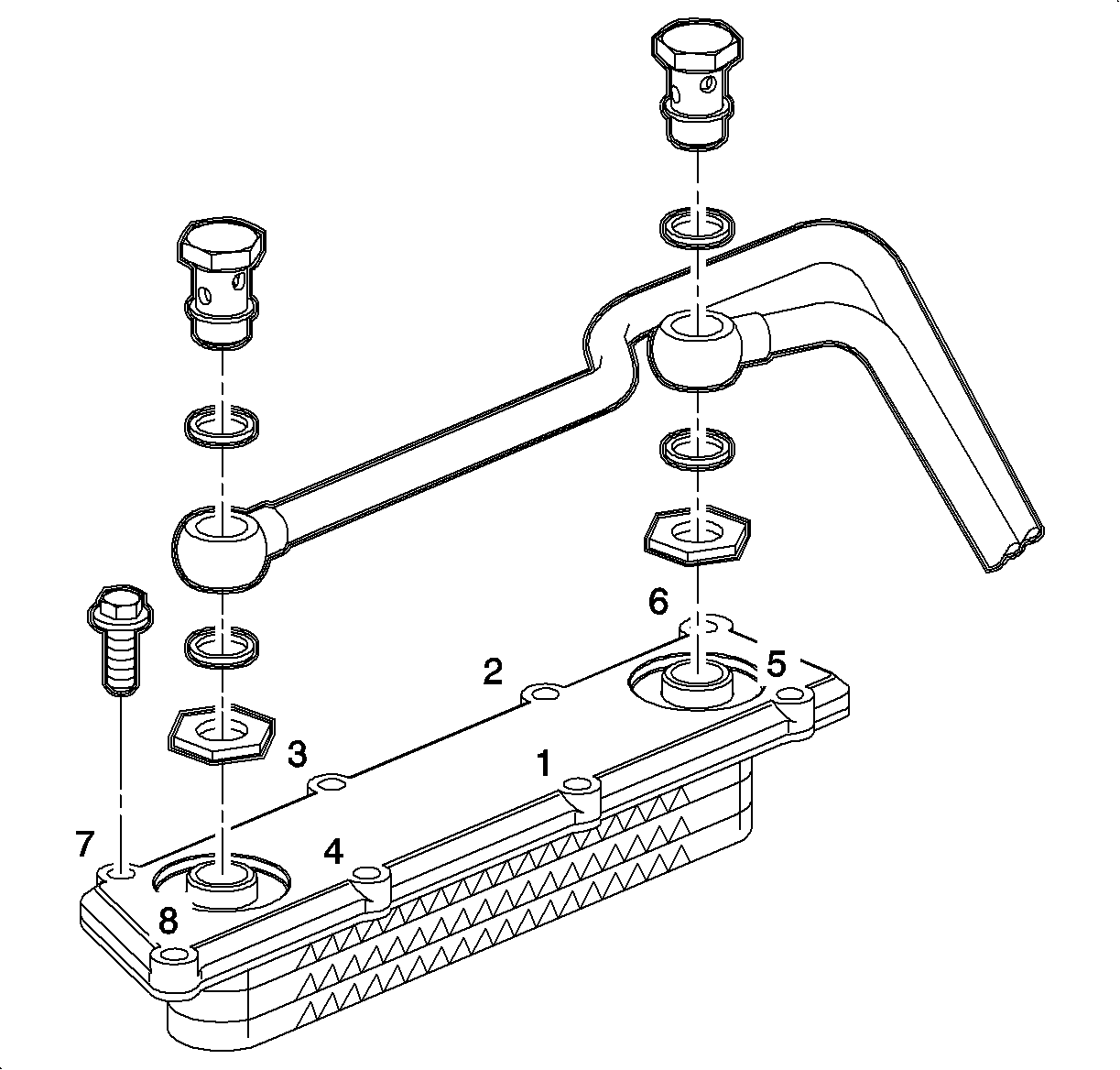
| 4.4. | Install oil cooler cover to block bolts using torque sequence shown. |
Tighten
Oil Cooler Cover-to-Block Bolts: 20N·m (15 lb ft)
| 4.5. | Install oil cooler cover to oil cooler nuts. |
Tighten
Oil Cooler Cover-to- Oil Cooler Nuts: 30N·m (22 lb ft)
| 4.6. | Install oil cooler feed and return lines. |
Tighten
Cooler Feed and Return Line Banjo Bolts: 30 N·m (22 lb ft)
+ 30°
Water Pump
Important: Leave throttle body coolant hoses connected so the system can be pressurized in order to locate leak.
- Remove front timing belt cover. Refer to "Timing Belt Cover Replacement (In-Vehicle) - Front" procedure in the Mechanical Section of the Applicable Model Year L-Series (L81) Engine Service Manual.)
- Inspect water pump. If coolant or residue is found on the top of the water pump higher than the weep hole, inspect for leak from top of engine (oil cooler cover, thermostat housing, etc.).
- Pressurize cooling system and inspect for a leak from water pump weep hole or engine block sealing area. (Some coolant from the weep hole is normal.) Replace or repair as necessary.
- Install front timing belt cover. (Refer to "Timing Belt Cover Replacement (In-Vehicle) - Front" procedure in the Mechanical Section of the Applicable Model Year L-Series (L81) Engine Service Manual.)
- Verify any repairs made by visual inspection after engine reaches normal operating temperature.

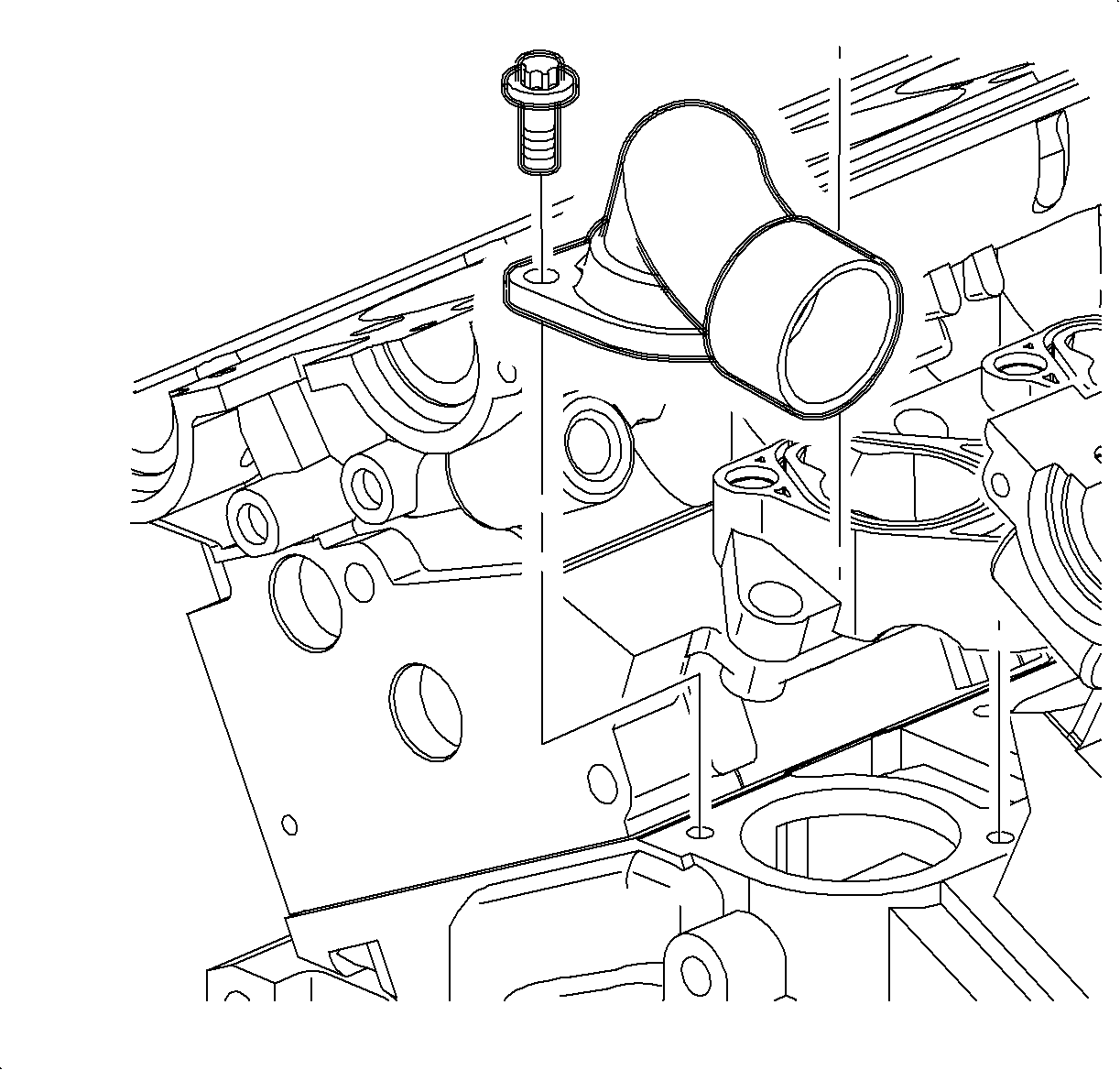
Thermostat Housing O-ring
Important: Apply thread sealant PST 565® (or equivalent) to thermostat housing bolt threads prior to installation.
Important: Leave throttle body coolant hoses connected to the system can be pressurized in order to locate leak.
- Remove components as necessary to allow visual inspection of thermostat housing. (Refer to "Thermostat Inlet Housing and Element" procedure in the Cooling Section of the Applicable Model Year L-Series (L81) Engine Service Manual.
- Clean area around thermostat housing.
- Using a black light or tracing powder around suspect area, pressurize coolant system to identify leak area. If thermostat housing is leaking replace O-ring.
- Install all components that were previously removed. Verify repair by visual inspection after engine reaches normal operating temperature.
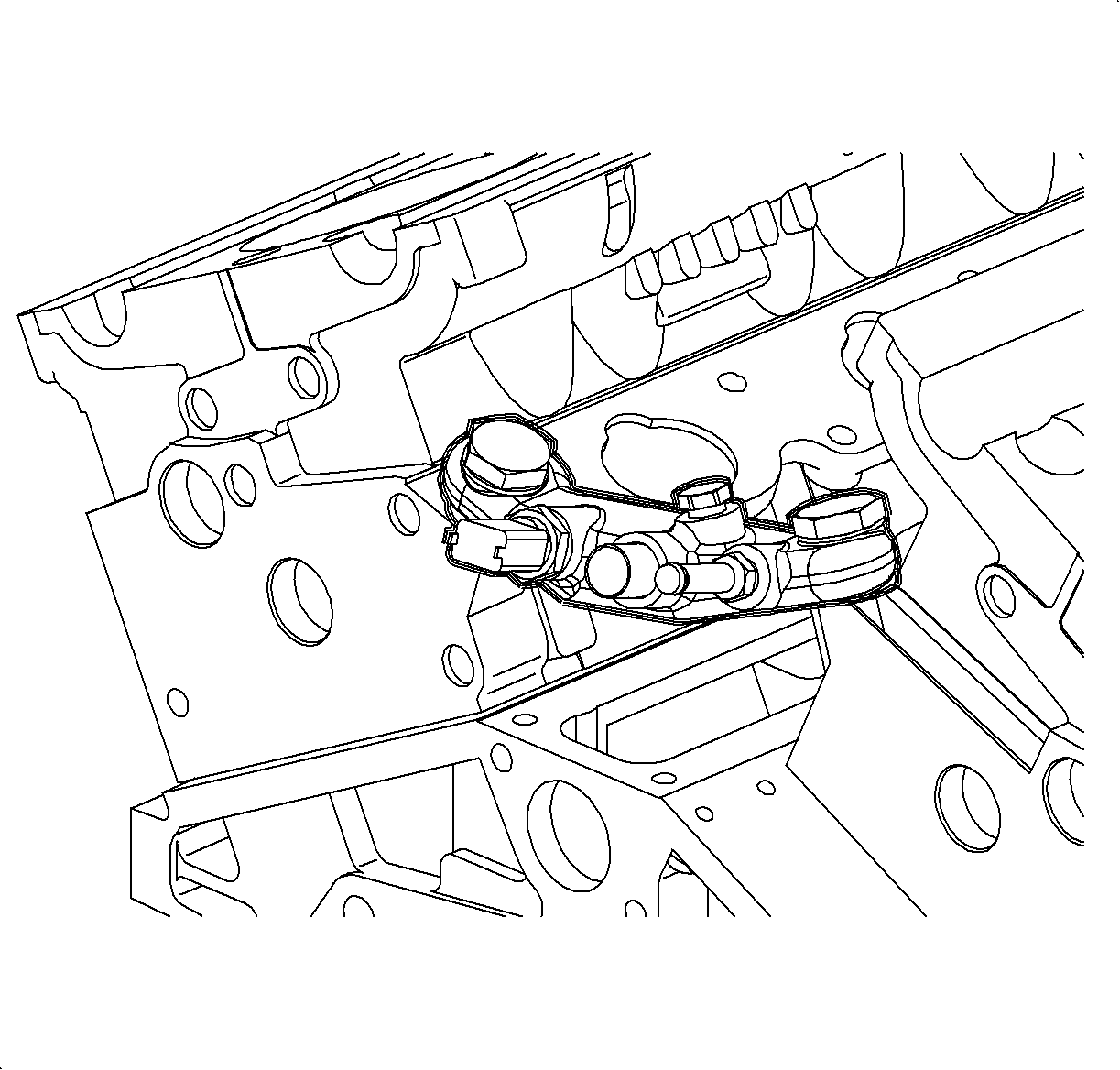
Coolant Bridge
- Visually inspect coolant bridge for leaks.
- If leak is from around banjo bolts, replace all four coolant bridge washers.
- Verify repair by visual inspection after engine reaches normal operating temperature.
Important: Lubricate O-ring washers with coolant to ease assembly.
Tighten
Coolant Bridge Bolts: 30N·m (22 lb ft)
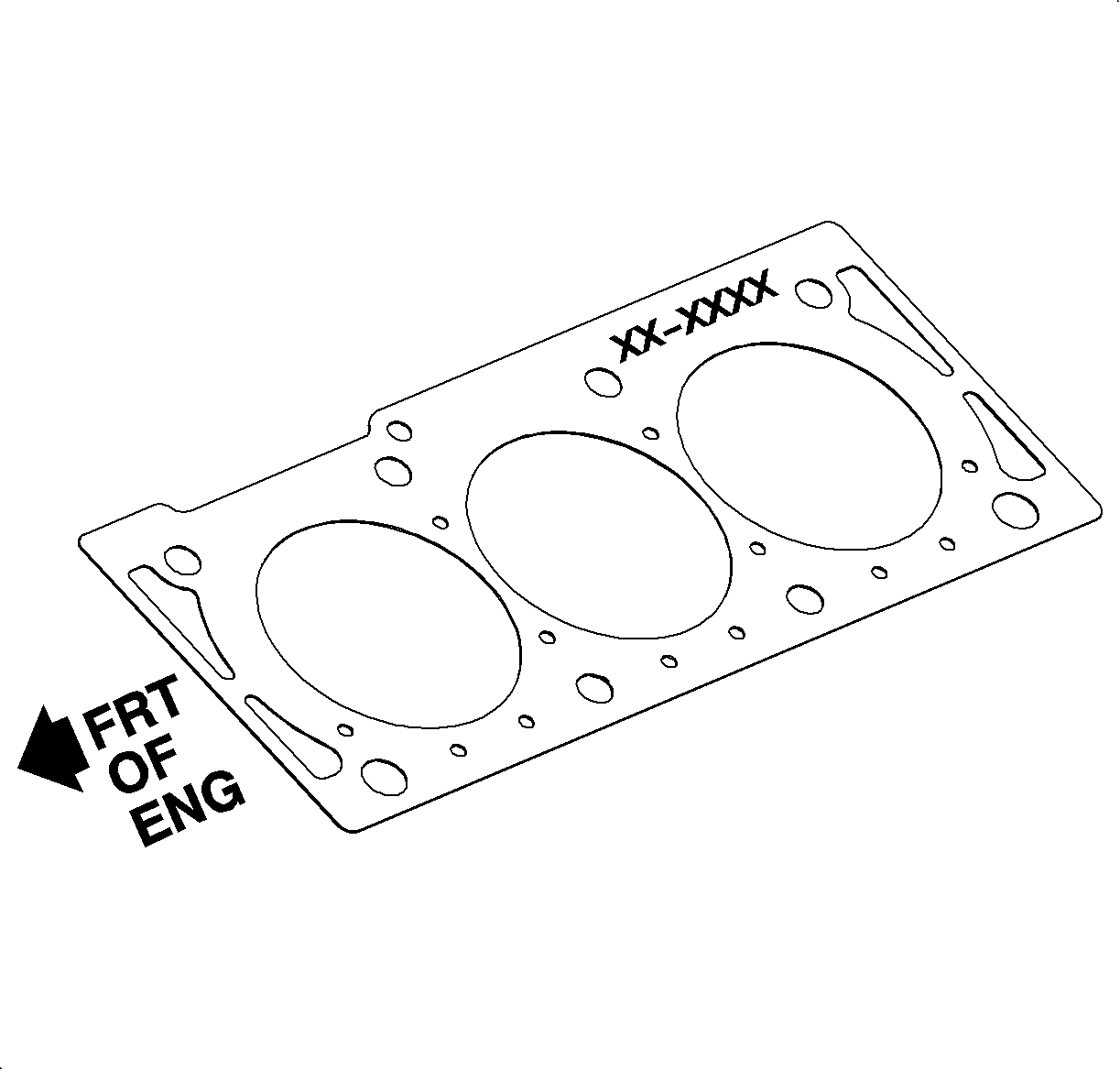
Cylinder Head Gasket
- By visual inspection, eliminate all other potential leak areas such as oil cooler cover, thermostat housing, coolant bridge, and throttle body coolant hoses since they can be misdiagnosed as a cylinder head gasket leak.
- Thoroughly clean leak area.
- Using a black light or tracing powder, verify source of coolant leak.
- If leak is determined to be from head gasket, repair as necessary. Verify repair by visual inspection after engine reaches normal operating temperature.

Throttle Body Coolant Hoses
- Visually inspect throttle body coolant hoses for leaks under throttle body.
- Replace throttle body hose clamps and/or hose as necessary. Verify repair by visual inspection after engine reaches normal operating temperature.
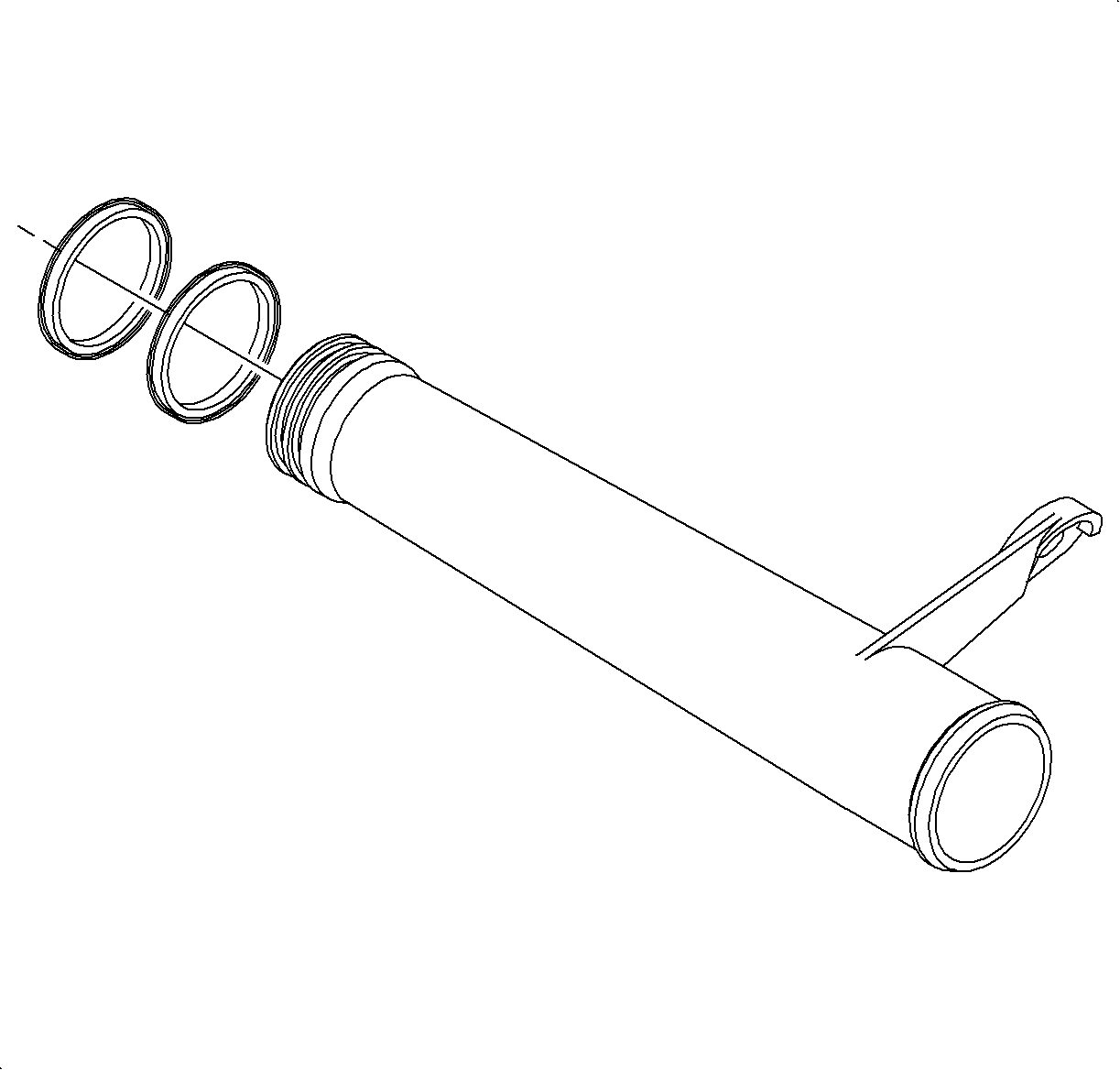
Extension Housing O-Rings
- Visually inspect joint between thermostat housing and extension housing for coolant leak.
- Replace extension housing O-rings as necessary. Verify repair by visual inspection after engine reaches normal operating temperature.
OIL LEAKS
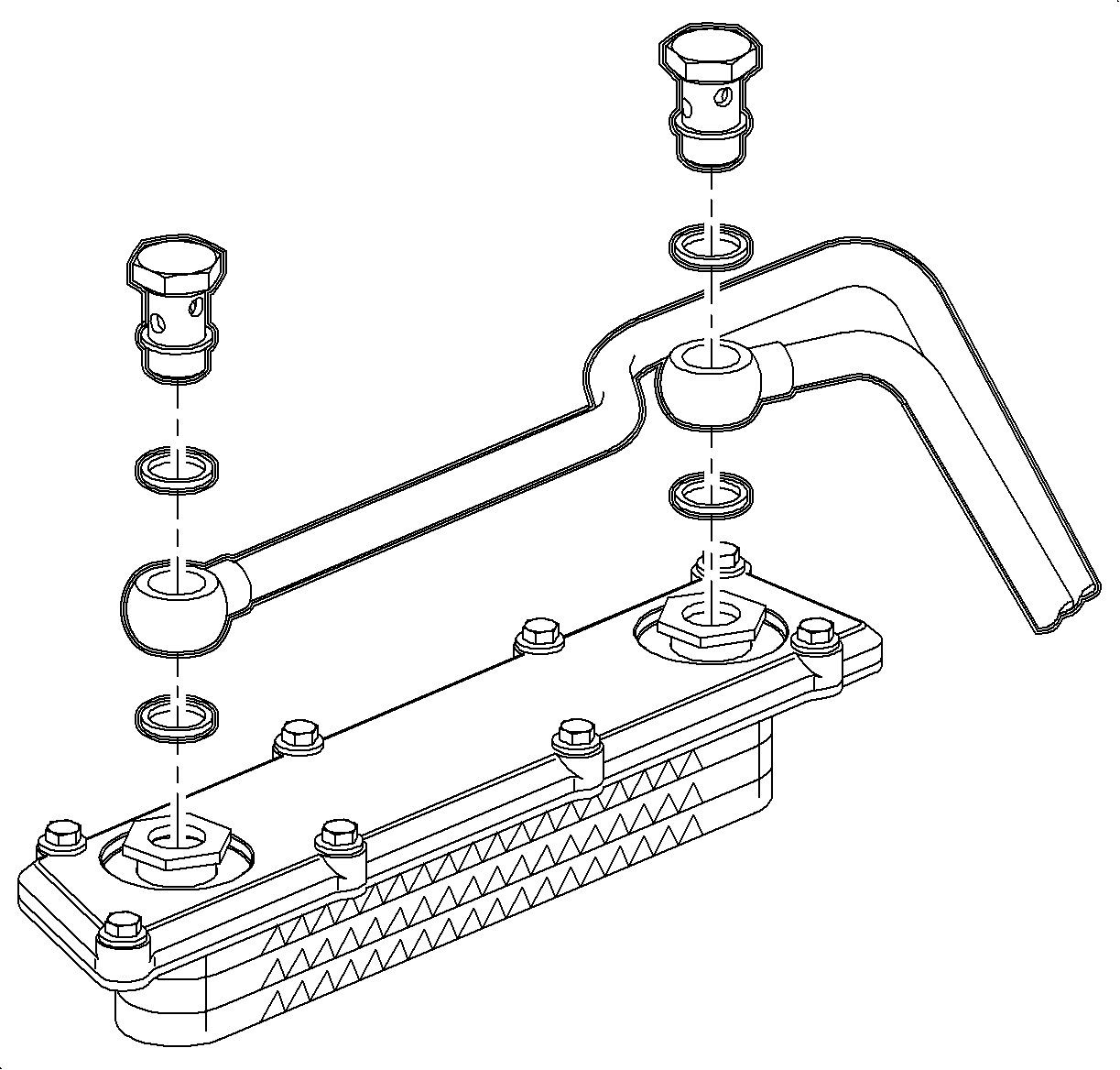
Oil Cooler Lines-to-Oil Cooler
- Remove all components as necessary to allow visual inspection of oil cooler cover recesses for oil. (Refer to "Oil Cooler Replacement" procedure in the Mechanical Section of the Applicable Model Year L-Series (L81) Engine Service Manual.)
- If oil has accumulated in either recess, replace both cooler line washers.
- Install all components that were previously removed. Verify repair by visual inspection after engine reaches normal operating temperature.
Tighten
Oil Cooler Lines: 30N·m (22 lb ft)
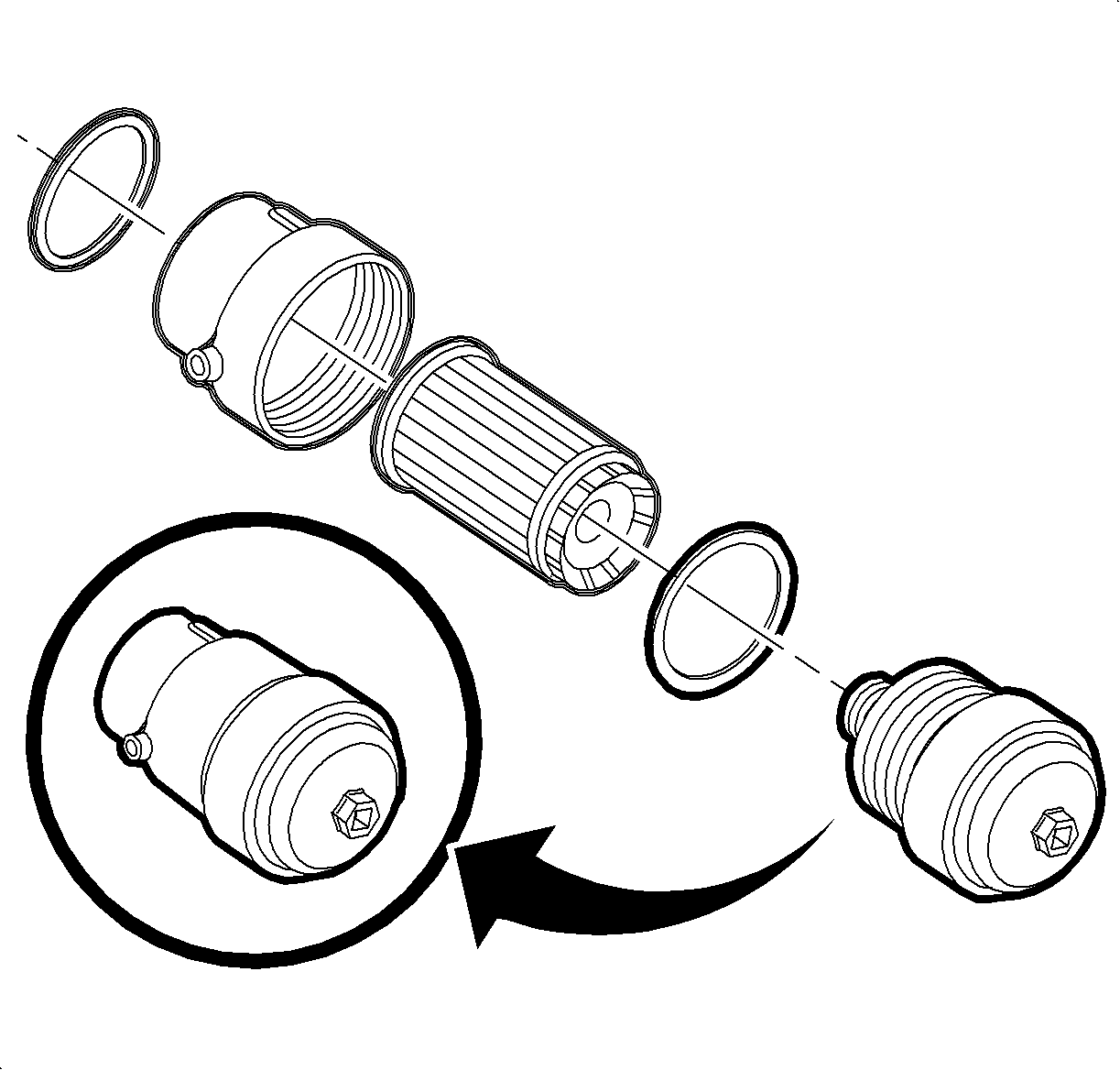
Oil Filter Housing
1. Inspect housing-to-block and cap-to-housing for any leaks. Repair as necessary and verify repair by visual inspection after engine reaches normal operating temperature.
Tighten
Oil Filter Cartridge Housing-to-Engine Block: 45N·m (33 lb ft)
Tighten
Oil Filter Cap: 15N·m (11 lb ft)

Oil Gallery Plugs
- Using a cotton swab or piece of tissue on end of thin screwdriver, wipe oil galleries around suspect leak area.
- If oil is present, remove gallery plug, apply LOCTITE® 272 threadlocker (or equivalent) to plug, and reinstall. Verify repair by visual inspection after engine reaches normal operating temperature.
Tighten
Oil Gallery Plug: 15 N·m (11 lb ft)
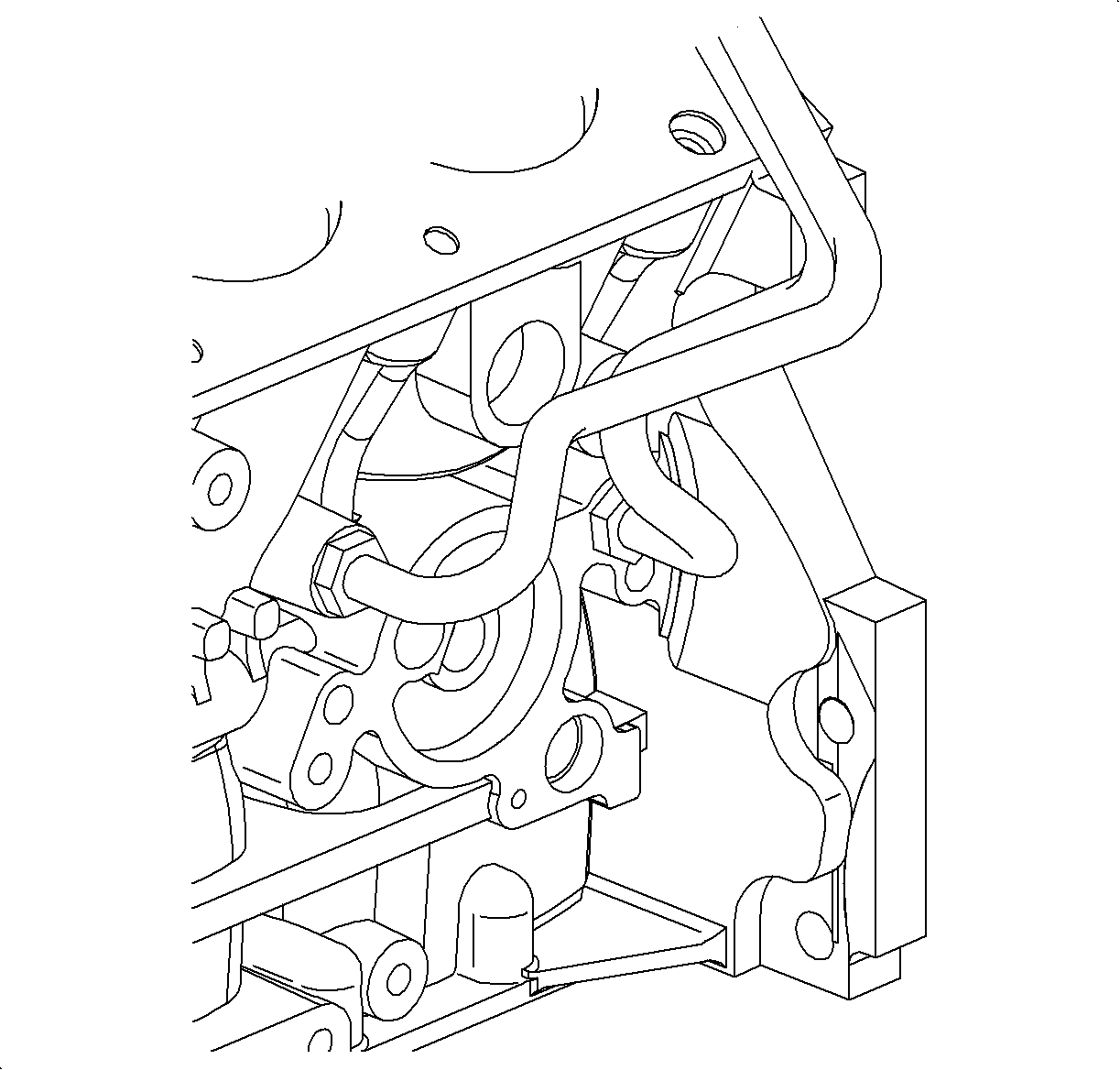
Oil Cooler Lines-to-Engine Block (By Filter Housing)
1. Inspect and repair as necessary. May only require retorquing of fittings. Verify repair by visual inspection after engine reaches normal operating temperature.
Tighten
Oil Cooler Feed and Return Lines-to-Engine Block: 30 N·m (22 lb ft)
